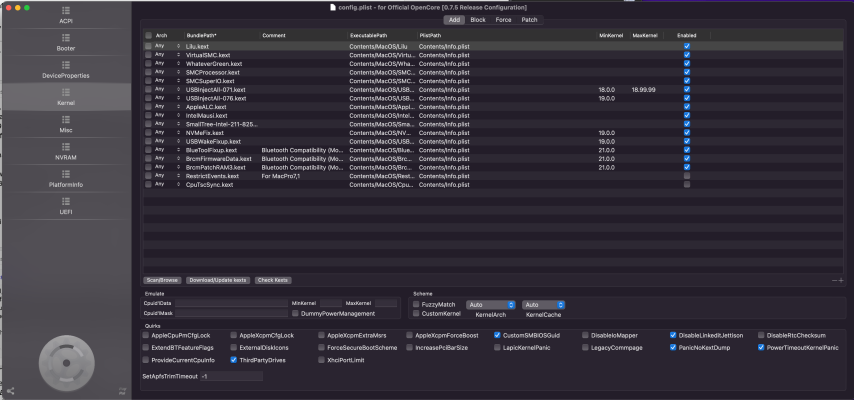Hey all,
I can finally move from Catalina to Big Sur at my shop, but I'm not having any luck getting the Big Sur standalone app installer to work. I've tried the 11.6 and 11.5.2 Big Sur gibMacOS downloads (as well as an older (16.4) version I've had saved). When I double-click the installer app, it launches, asks me to select my install drive, asks for my admin password, starts chugging along, then says "An error occurred loading the update." I also tried an older Big Sur installer (from another machine) and it actually went through the reboot, then chugged for 5 minutes, only to wind up with the same error (and a trashed boot drive).
I'm a devout follower of this thread, and on a fully functional z390 Designare with Mac OS 10.5.7 using Intel Wireless OC 0.7.5. I DO have my MISC/SECURITY set to "Disable."
I "think" I remember reading something this past year about needing to disable Read-Only on the install drive, but I can't find anything about that now. My assumption is my array of Big Sur installers (including the gibOS ones) are just corrupt. I AM installing to my normal internal boot volume which happens to be an Inland Premium m.2 (no issues thus far though), so I'm thinking about pulling my Inland m.2 and trying the install using my 2.5" SSD instead.
Any words of advice?
Thanks in advance,
J


